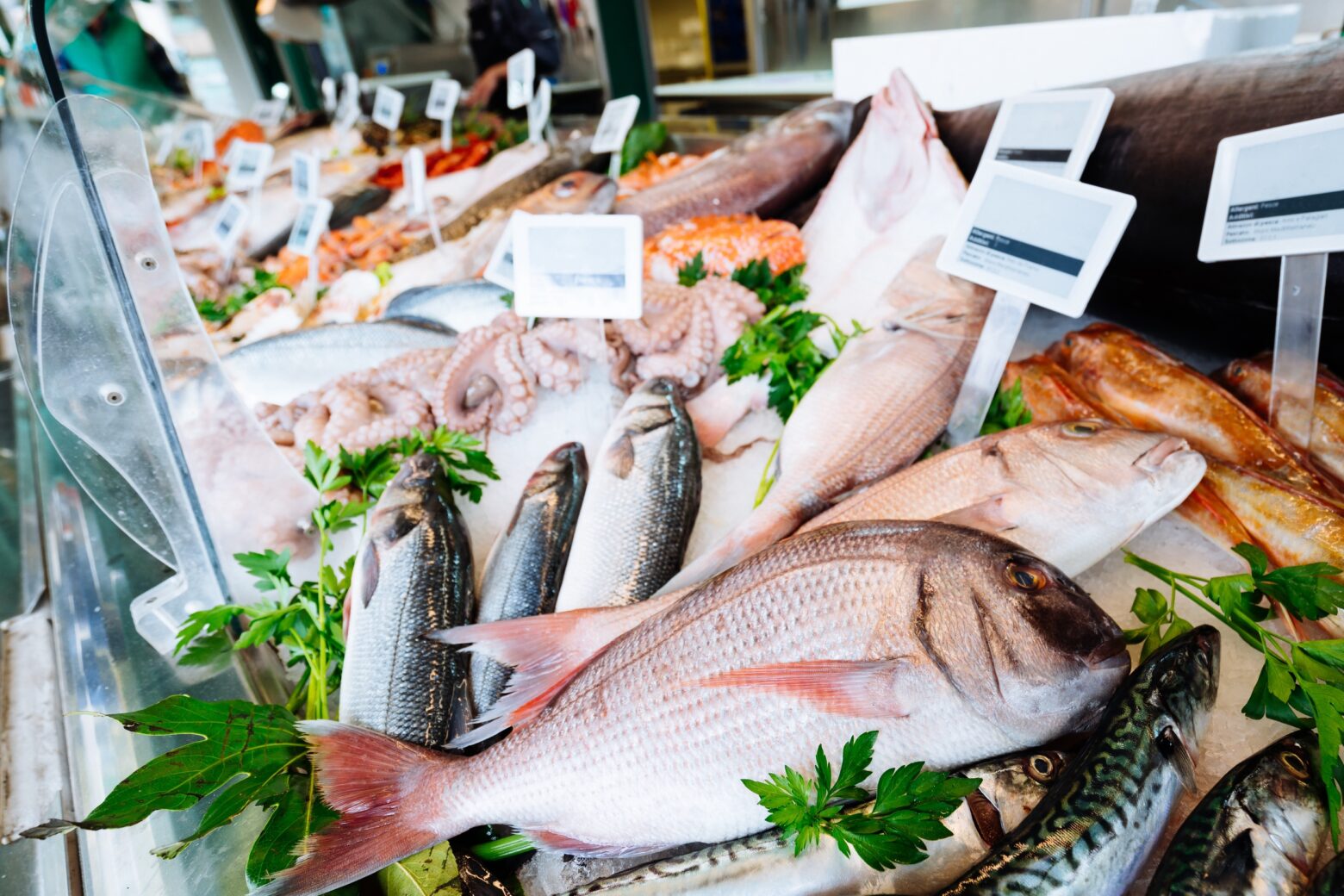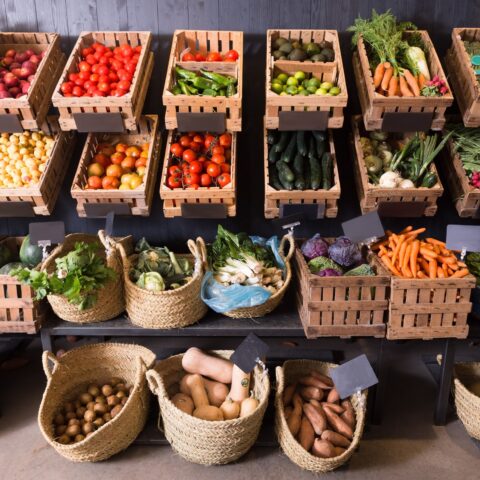Should I Choose Wild or Farmed Fish?

When I began my career in fisheries science 43 years ago, I had no idea a major debate over where we get our fish from would be as contentious as it has become. Admittedly, I was drawn to the important questions of our future food supplies and the role fish would play in that future.
So, I ask here the burning question: Should we buy fish sourced from the wild or from farms—also known as aquacultured fish? Facts and science can lead us to an answer.
The seas are limited
According to the UN Food and Agriculture Organization, the overall demand and supply today in the world for fish and seafood is about 175 million metric tons per year (that’s 385 billion pounds) and is growing at a rate of about 3 percent per year. [1] The reasons for this rapid growth are numerous, but steady increases in world population and the rise of the large Chinese middle class (with more disposable income and an aspiration for higher-quality protein) are near the top of the list.
Of the 175 million metric tons of supply, 90 to 95 million metric tons come from the wild. The remaining 80 to 85 million metric tons come from aquaculture—fish farms—with a value that exceeds $231 billion. The issue is that the seas have reached their production limits and did so more than 25 years ago. Indeed, many wild fisheries are over-fished and are threatened with collapse.
Additionally, there is another 30 million metric tons per year of aquatic plants (mostly macroalgae) that are produced on aquatic farms in addition to fish and shellfish. [1]
The bottom line: Wild supplies are finite! More wild fish will not miraculously appear, and we don’t want to slaughter every one of them – but that’s what would happen without aquaculture. We would eat every remaining fish on the planet, and then a few days later we would be hungry again.
18 Reasons Why We Should Look to Aquaculture
As the saying goes, every cloud has a silver lining. This cloud is no different. The issue is the various misconceptions. Many lump fish farms in with large-scale cattle and chicken feedlot farms with all the same health and environmental concerns. But that’s just not the case.
Here’s why we should look to aquaculture as a solution to our predicament:
1. Supplies from farms are not finite.
This means that aquaculture will continue to grow rapidly (about 5 percent per year), and over time supplies from the wild will essentially fade into the background—though not disappear entirely—as a percentage of total supply.
2. True environmentalists are pro-aquaculture.
Aquaculture takes human supply pressure off wild stocks and puts it where it should be—on production from farms. Aquaculture is agriculture. Hunting and gathering must end in the seas as it ended on land 10,000 years ago at the dawn of terrestrial agriculture.
3. Farmed fish are not abused.
The notion of abuse is completely counterproductive to the best interests of the fish farmer and counter-intuitive to their goals, which are fast-growing and healthy fish. Water quality, fish densities, and nutrition are optimized to reduce stress and create a healthy production environment. They are treated with the respect they need and happy fish create high rates of survival, smaller feed bills, and healthy profits for producers. Humane treatment is simply good business.
4. Aquaculture products are fully traceable.
From feed to hatchery ,to grow-out, to processing, to distribution, to endpoint of sale, we know exactly what went into farmed fish production and their exposure. [2] Traceability simply is not possible with wild fin fish and shellfish. We don’t know what they have eaten or what they have been exposed to (toxins, medical waste, plastics, heavy metals, etc.).
5. Water use and discharge from many indoor facilities is limited by use of recirculating aquaculture system (RAS) technology.
This approach uses filters that reuse water again and again, filtering out wastes and replenishing oxygen. This is a very frugal approach that uses minimal amounts of water as compared to other conventional technologies such as raceways, ponds, and ocean net-pens.
6. More and more fish farm operators use a technique called integrated multi-trophic aquaculture (IMTA).
This is where the “wastes” from the fish facility are used as raw materials for production of other products such as shellfish and saleable plants. [3,4] These secondary crops act as natural filters, turning potential liabilities (i.e., fish wastes) into raw material assets. Operators literally make money from wastes. Additionally, solid wastes can be used as high-quality material for composting and application to farmers’ fields.
7. Aquaponics (i.e., integrated aquaculture and hydroponics) is one form of IMTA.
This is a very popular land-based form of IMTA, usually with the fish in tanks in an insulated building and the plants in an adjacent, attached greenhouse. This approach is highly scalable—very small and costing only a few dollars (and fits on a kitchen countertop), to very large systems capitalized with tens of millions of dollars.
8. Discharge water is high quality when RAS and IMTA systems are used.
The discharge water (what of it there is—only small amounts) is high quality or higher than the intake water.
9. Indoor facilities can operate year-round.
In good and bad weather they employ people who otherwise may not be able to find work.
10. The excessive use of chemicals and antibiotics in aquaculture is a myth in North America, Europe, and many parts of Asia.
In fact, as aquaculture is such a fledgling industry, the controlling government departments have made the use of these compounds more difficult than most other forms of agriculture. In the USA, the FDA highly regulates use of most chemicals and antibiotics. [5] They are only allowed after the demonstration of need through a clinical examination and/or under the guidance of a veterinarian.
11. Aquaculture producers avoid the use of all therapeutants (i.e., antibiotics, sterilants, vaccines, etc.) whenever possible.
They are expensive and diminish profitability. Instead, producers are turning to probiotics, superior management techniques and equipment, and other benign forms of health maintenance. Farmed fin fish and shellfish are health food—wholesome and nutritious.
12. Third-party certification programs are now the norm in aquaculture and in all parts of the world.
Much like the Good Housekeeping Seal of Approval or Underwriters Laboratories UL, they guarantee fish welfare, sustainability, environmental sensitivity, sanitation, freedom from chemical residues, and wholesomeness.
Buy Farm-Raised Fish
Aquaculture is not perfect (again, aquaculture is not perfect!). No one claims it is, and aquaculture is not a panacea. But improvements are implemented every day and every year, such as alternative and sustainable aquaculture (actually, this is true for all livestock including fish) and feed ingredients (e.g., insect- and algal-based proteins and oils) which are coming on strong. I see it all the time. Indeed, as a consultant, I can help fix what is wrong.
Let’s allow the wild fish to live out their lives in peace and help them to contribute to the overall health of the natural aquatic ecosystems in which they reside, as they should. When you buy fish, buy farmed products and rest comfortably that you are doing the best for yourself and the world.
References
1. FAO. 2018. FAO yearbook. Fishery and aquaculture statistics 2016. Food and Agriculture Organization of the United Nations.http://www.fao.org/3/i9942t/I9942T.pdf
2. FDA. 1999. Guidance for industry: questions and answers for guidance to facilitate the implementation of a HACCP system in seafood processing. U.S. Food and Drug Administration. https://www.fda.gov/regulatory-information/search-fda-guidance-documents/guidance-industry-questions-and-answers-guidance-facilitate-implementation-haccp-system-seafood.
3. Anonymous. 2019. Integrated multi-trophic aquaculture.Wikipedia. https://en.wikipedia.org/wiki/Integrated_multi-trophic_aquaculture
4. Boxman, S.E., A. Kruglick, B. McCarthy, N.P. Brennan, M. Nystrom, S.J. Ergas, T. Hanson, K.L. Main, and M.A. Trotz. 2015. Performance evaluation of a commercial land-based integratedmulti-trophic aquaculture system using constructed wetlands andgeotextile bags for solids treatment. Aquacultural Engineering 69:23-36.
5. FWS. 2015. Approved drugs for use in aquaculture. U.S. Fish and Wildlife Service. https://www.fws.gov/fisheries/aadap/PDF/2nd-Edition-FINAL.pdf
6. Anonymous. 2018. Feed conversion ratio. Wikipedia. https://en.wikipedia.org/wiki/Feed_conversion_ratio#Beef_cattle
7. Hardy, R.W. 2005. Contaminants in salmon: a follow-up. Aquaculture Magazine 31(2):43-45.
8. Hardy, R.W. 2003. Farmed fish and omega-3 fatty acids. Aquaculture Magazine 29(2):63-65.
9. Despommier, D. 2010. Vertical farming. Thomas Dunne Books. New York. 305pp.
Bill Manci
Bill Manci is the president of a fisheries and aquaculture consulting company and he has worked with The Paleo Diet since 2002.
More About The Author




